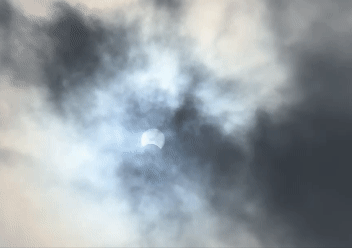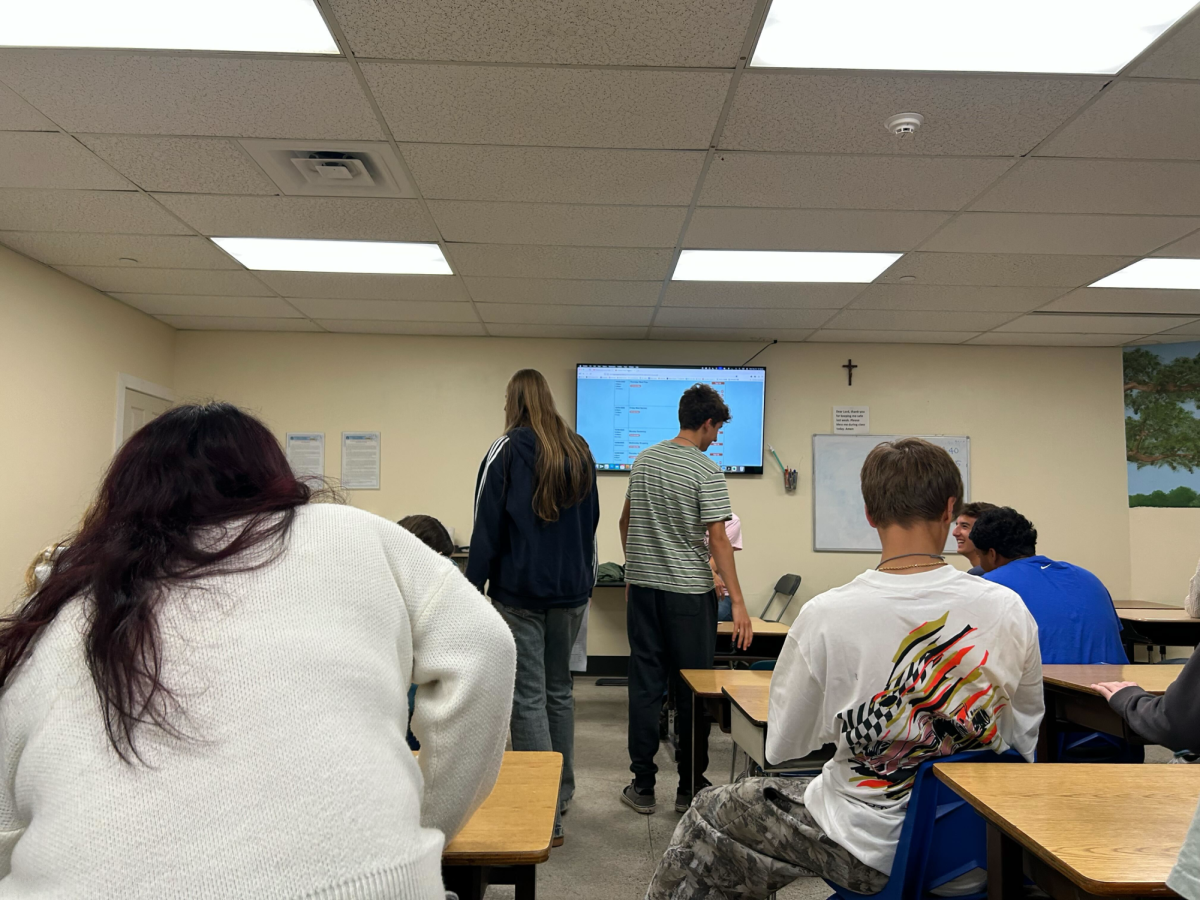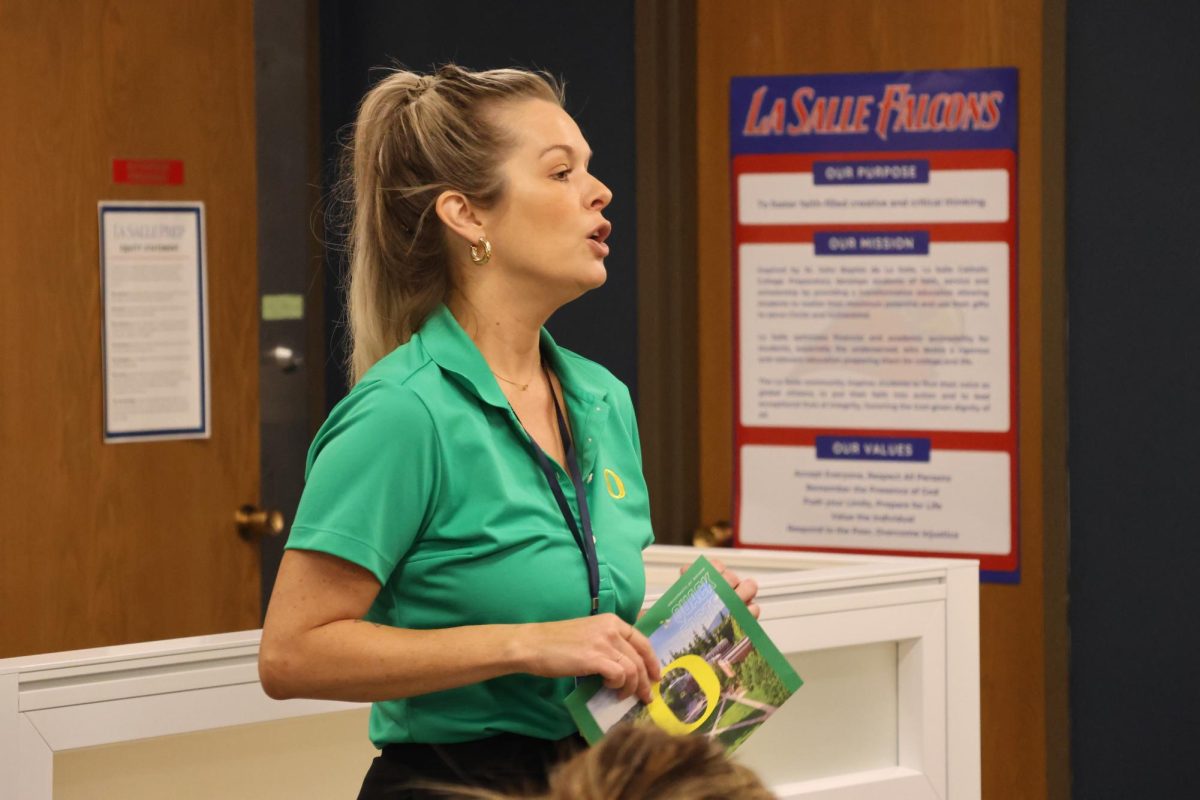On Monday, April 8, the total solar eclipse was visible in the sky, mainly in parts of Mexico, 15 U.S. states and Eastern Canada.
Some students and staff took time between 11:07 a.m. and 11:30 a.m. to go and see the eclipse through the immense amount of clouds. A few were able to see a slight version of the moon moving over the sun as the clouds moved out of the way.
Since Ms. Carie Coleman, Director of STEAM, Innovation and Design Teacher, didn’t have a pair of the solar eclipse glasses, she chose to create her own device to see the eclipse. “I made a pinhole camera or viewer,” Ms. Coleman said.

“It was really bright outside and I didn’t want to burn my retinas because we have no pain receptors in our eyes, so I was very conscious about that,” Ms. Coleman said. “It was very hard to see because it was such a small eclipse, but I did see a little fraction of it.”
The last total solar eclipse that had occurred in North America was on Aug. 21, 2017. That eclipse was visible within a band that spanned in the United States from the Pacific to Atlantic coasts, putting Oregon in the line of totality of the eclipse.
During the 2017 solar eclipse, Ms. Coleman took time to view it in her backyard. “It was really cool because I remember it got kind of dark and then it got really cool and then I heard birds chirping like they do at night,” Ms.Coleman said.

The next solar eclipse in the contiguous U.S. will be on Aug. 23, 2044. The 2044 eclipse will start in Greenland on Aug. 23, 2044 and will continue through Canada. The eclipse will mainly appear in Canada, but it will be spotted in the U.S. in Montana, North Dakota, and South Dakota.
The more visible solar eclipse for the U.S. will be in 2045, as it will move coast to coast. Starting in California the eclipse will then move east to end in Florida, very similarly to the 2017 eclipse. It will bring about dark skies for a short period of time in the U.S., Haiti, Dominican Republic, Venezuela, Guyana, French Guiana, Suriname, and Brazil.








